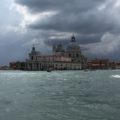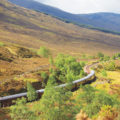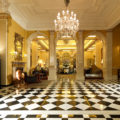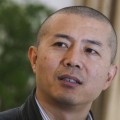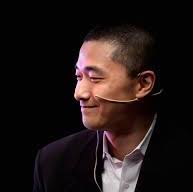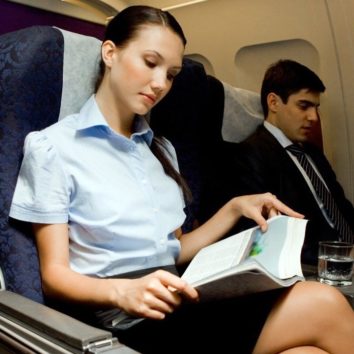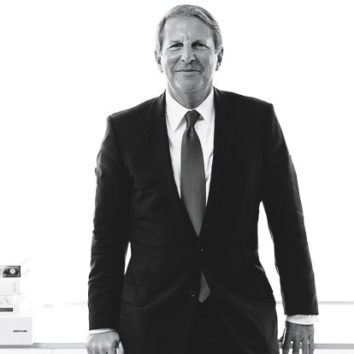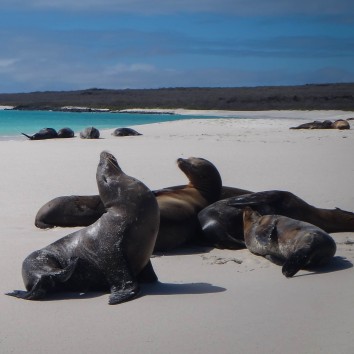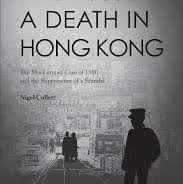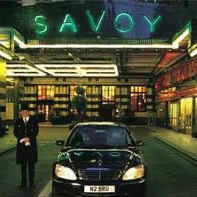
Sanctums for the scribe
— March 1, 2014Inspiration doesn’t always come easy, but sometimes a cosy hotel room is all a writer needs to get that burst of creative energy Every writer needs a room of their own. No one would argue with that, but that’s not to say the room needs to be a permanent, fixed address. Sometimes a room rented for just a night is all that is needed to find inspiration or polish a manuscript. No doubt Virginia Woolf would have agreed.
Writers have been holing themselves up in hotels to work ever since books have been published. JK Rowling may have started writing Harry Potter in Edinburgh cafes, but when the series was well established and she was under deadline pressure it was the Scottish capital’s finest hotels that she retreated to – she had more than enough money to pay for them by then.
A hotel stay is the chance to escape domestic duties and the demands of a family to focus on the nitty-gritty of getting words on the page. Chambermaids and room service mean there’s no excuse for procrastinating, but if the dreaded writer’s block does strike, there’s always the comfort of the bar downstairs. But this writer-hotel relationship isn’t a one-way affair. For centuries, hotels have benefitted from their liaisons with the literary community. Highbrow or lowbrow, comical or scholarly, it doesn’t matter what sort of books the author produces, as long as they are a name. A well-known writer on the premises, whether they are holed up in their room like Rowling or propping up the bar as was Oscar Wilde’s way, lends a hotel calibre and the effect is enduring.
The Savoy, London
When it comes to literary heritage, it’s hard to beat The Savoy. One of London’s best- established hotels, it has links to writers that stretch way back, even before the hotel received its first paying guests in 1889. Understanding the value of being associated with the literary elite, today The Savoy goes out of its way to make sure that the leading scribes are made welcome.
The Savoy’s literary tradition goes back to the Middle Ages and the man considered the Father of English literature, Geoffrey Chaucer. For several years in the late 1360s – long before Frette sheets and room service – the original Savoy Palace was home for Chaucer, and he is thought to have composed some of The Canterbury Tales there.
The Savoy Palace was destroyed in the Peasants Revolt of 1381 and the site redeveloped several times over subsequent centuries. The creation of the hotel itself is in large part due to an artistic success. Richard D’Oyly Carte was an English talent agent and theatrical impresario. In 1875 he brought together dramatist WS Gilbert and composer Arthur Sullivan and persuaded them to write the first of the Savoy Operas. The operas were so well received that D’Oyly Carte built the Savoy Theatre in 1881 to better stage them. It was a groundbreaking venue – the world’s first theatre to be lit entirely by electricity.
Riding off the back of his success with the operas, he toured America with them. It was in the US that he experienced the luxury of modern and comfortable hotels and determined to build one in London for his American opera fans when they visited. It was a winning combination and today, the hotel still stands beside the Savoy Theatre. Understanding the value of strong literary connections, in 2002 The Savoy became the first luxury hotel in London to have its own ‘Writer in Residence’ scheme. The first writer to take up this honour was Fay Weldon. It was an enviable job description: three months in a river-front suite with breakfast included and no obligation to write anything specific.
The following year the raucous Australian wit Kathy Lette was took up the mantle with nothing expected of her but to attend four literary dinners and “swan about being a bit witty” as she put it. She loved every minute of it and writing in her blog she said: “A writer’s life is the opposite of glamorous. Normally we feel about as valued as a giveaway shampoo sachet in a fashion magazine. But living at the Savoy, a staff of 500 were at my beck and call…Is it any wonder I was smiling as smugly as a canary filled cat?”
Years later she told the Guardian that it was the best four months of her life, despite the fact that “the only thing I wrote was cheques, for champagne.” Although that might be somewhat of an exaggeration because not long after she completed her novel Dead Sexy and launched it at the hotel in 2005.
In 2005 came Frank McCourt, best known for the heartbreaking memoir about life in rural Ireland in the 1930s, Angela’s Ashes. Life in The Savoy must have been a world away from the grim days in pre-war Limerick. And the last writer to enjoy the programme was Michael Morpurgo in 2006, who was inspired by Kaspar, The Savoy’s black cat sculpture, to write a children’s book, Kaspar, Prince of Cats. The Kaspar sculpture itself has an interesting story. In the late 1800s South African diamond magnate Woolf Joel held a banquet for 14 guests at The Savoy. At the last minute a guest cancelled and one of the party remarked that left an unlucky 13 for dinner. When the dinner was finished Joel thanked his guests for coming and as he was saying his goodbyes his superstitious friend said the first person to leave the table would be unlucky and the first to die. Joel laughed the comment off, but a few weeks later he was shot dead in Johannesburg.
News of Joel’s death was much discussed in London and for some time, whenever there were 13 guests at a Savoy dinner, a member of staff sat at the table to avoid the unlucky number. A better solution was realised in 1926: an architect was commissioned to create a two-foot model of a black cat. The cat was named Kaspar and to this day whenever a 14th guest is required at the Savoy Grill he sits in a chair, a napkin tied around his neck, and is served every course. Last year the hotel’s new Art Deco restaurant was named after him, Kaspar’s Seafood Bar & Grill. www.fairmont.com
Mandarin Oriental, Bangkok
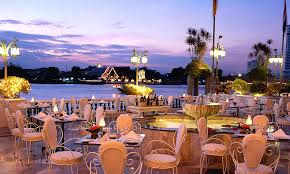 Historic hotels all have their own intriguing stories such as Kaspar. It’s little wonder that writers are drawn to them – and if not the hotel’s stories, then those of the other patrons. Joseph Conrad, a Polish navy man, spent his free time in Bangkok at The Oriental, as it was known then. He never actually stayed at the hotel, preferring to sleep on his ship the Otago that was moored within staggering distance, but he was a regular at the bar and enjoyed swapping stories with fellow drinkers.
Historic hotels all have their own intriguing stories such as Kaspar. It’s little wonder that writers are drawn to them – and if not the hotel’s stories, then those of the other patrons. Joseph Conrad, a Polish navy man, spent his free time in Bangkok at The Oriental, as it was known then. He never actually stayed at the hotel, preferring to sleep on his ship the Otago that was moored within staggering distance, but he was a regular at the bar and enjoyed swapping stories with fellow drinkers.
In his novella Falk that was published in 1901, some years after he’d left the navy to write full-time, he recalled those days at the Oriental: “We talked of wrecks, of short rations and of heroism…and not and then falling silent and together, we gazed past the sights of the river.”
Safely ensconced in England he drew heavily on his time in Asia and at sea for his fiction. Among the best known are The Shadow Line – inspired by his journeys between Bangkok and Singapore – and Lord Jim, which tells the tale of a young British seaman coming to terms with having abandoned a ship in distress and was ranked by the Modern Library as one of the best 100 English-language novels of the 20th century.
The hotel is proud of its bond with Conrad. The Mandarin Oriental’s seafood restaurant is called Lord Jim and it has named one of its colonial suites after him. Decorated in a palette of blues and creams, with dark wood furnishings and its own terrace overlooking the Chao Phraya River, it is one of a number of suites named after an author who has visited, each suite designed to reflect the personality of the writer and with plenty of their books on the shelves.
The John Le Carré suite has a very masculine quality while the Barbara Cartland suite – named after the grand dame of romance fiction – is painted pink and very feminine. Dame Barbara based two of her novels in Bangkok after her first stay and even named one of her heroines after one of the staff.
The list of authors who have stayed at the hotel is a Who’s Who of Literature. Somerset Maugham, Graham Greene, James Michener and Noël Coward all have suites named after them and there are many more who are remembered in the reading room: Ernest Hemingway, Rudyard Kipling, George Orwell, Oscar Wilde, George Bernard Shaw, Tennessee Williams, Arthur Conan Doyle, Edith Wharton, Dorothy Sayers, the list goes on. And, as you’d expect, works by all these writers are available for guests to borrow in the library.
Today, writers looking for inspiration can do as Noël Coward did and sit on the hotel’s terrace beside the river. The buildings along the riverbank may have changed, but the river itself is very much like it was in the English playwright’s day. Conrad noted in his journal: “There is a terrace overlooking the swift river where we have drinks every evening watching the liver-coloured water swirling by and tiny steam tugs hauling rows of barges up the river against the tide.” www.mandarinoriental.com
Fairmont Peace Hotel, Shanghai
No surprise that some of the authors who stayed at The Oriental in Bangkok also stayed at the Peace Hotel in Shanghai – as today, they were among the most prestigious hotels in Asia. Noël Coward, so moved by the Chao Phraya River, was equally inspired by the Bund in Shanghai.
Named the ‘Cathay Hotel’ when it was opened on the Bund in 1929, it was the personal vision of Victor Sassoon and in its day was referred to as the ‘Claridge’s of the East’. It was renamed the Peace Hotel in 1956 when it was paired with the neighbouring Palace Hotel.
Noël Coward was among the first big- name authors to stay at the Cathay Hotel. Suffering from the flu, he checked into Room 314 at the end of December 1929. He made good use of his time and completed his play, Private Lives. A comedy about a divorced couple who honeymoon with their new partners at the same hotel, it is still playing at theatres in London.
Another playwright, George Bernard Shaw, also stayed at the hotel, but it is the American writer Emily Hahn who made a bigger impression and not just because she was a regular at the bar. Hahn has a string of novels to her name, the best known is The Soong Sisters. She lived in Shanghai from the mid-1930s through to the Japanese invasion of Hong Kong in 1941 and became a close friend of Victor Sassoon, who owned the hotel.
A quirky and outspoken writer, she invariably arrived with her pet gibbon, Mr Mills, in tow. Mr Mills would sit with her at the bar and if she was invited to a dinner party he would arrive dressed in a dinner jacket and a diaper and take a chair at the table. In her book China to Me, Hahn recalls her wild days at the hotel: “I might meet a girl at the Cathay, with drinks first in the lounge; that meant we would pick up men and make a party of it.”
Years later it was the American journalist Edgar Snow who made waves when he stayed in 1960 en route to a meeting with Chairman Mao Zedong. He was given a prestigious corner room overlooking the Bund. The room has since been renamed the American Suite. In 2007 the hotel was closed for a major renovation and reopened in 2010 as the Fairmont Peace Hotel. It was a sensitive restoration that preserved the Art Deco features and the American Suite is much as it was when Snow stayed. The original dark wood panelling in the dining room and living room remains and of course it still has that impressive view of the Bund. The writing desk is beside the fireplace – yes, a fireplace – an ideal place for Snow to prepare for his groundbreaking interview (he was the first Western journalist to interview Mao) and perhaps make notes for The Other Side of the River. www.fairmont.com
Corinthia Hotel, London
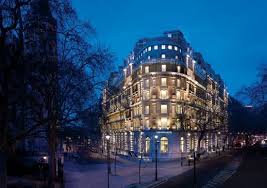 If a well-situated writing desk in a comfortable room, perhaps with a view of a river, is key to getting the creative juices flowing, then Corinthia Hotel London has perhaps the best writer’s retreat in London.
If a well-situated writing desk in a comfortable room, perhaps with a view of a river, is key to getting the creative juices flowing, then Corinthia Hotel London has perhaps the best writer’s retreat in London.
Although only a couple of years old, the Corinthia Hotel London has a history stretching back to 1885 when the Gordon Hotels company built the Metropole Hotel. Located beside the Thames River at the end of Northumberland Avenue, for several decades it was one of the capital’s most glamorous hotels, playing host to European royalty, celebrities and writers of the day. But it was its great location – close to the West End, but also to the Houses of Parliament and Whitehall – that spelt the end of its days as a hotel.
During both World War I and II it was commandeered for use as Government offices and then the Ministry of Defence took it over in the 1940s. The best-known employee at the Ministry Defence – albeit a fictional one – was a certain Mr Bond and in the James Bond comic strip the artist Yaroslav Horak often depicted the Metropole Building as MI6 headquarters. So when the much-anticipated Bond movie Skyfall was released in 2012, it made sense that it was launched at the Corinthia Hotel London. James Bond fans who visit the Corinthia will recognise the street beside the hotel, Whitehall Place, which featured in an action sequence in the movie.
The Corinthia has all the ingredients to nurture the soul of a thirsty writer – there’s the long history, the mystery and intrigue and to top it all off a Writer’s Penthouse. This sumptuous two-storey apartment at the top of the hotel is the ultimate temporary residence for an author. There’s a double- height lounge lined with bookshelves and a limestone fireplace, the perfect place to entertain. And when it comes down to the hard graft of writing, there are a number of places to settle: perhaps the antique writing bureau in the lounge, the roof terrace, the bath with views over London or at the desk in the bedroom. Set in a small internal balcony overlooking the reading room, this desk isn’t just well positioned; it’s huge – a whopping two metres long. That’s a generous amount of space for a writer to spread out and craft an intriguing tale. www.corinthia.com
[PDF url=https://www.hongkongkate.com/wp-content/uploads/2014/07/151-Asia-Spa-Writers-Retreats.pdf]
